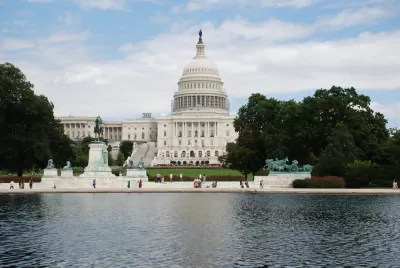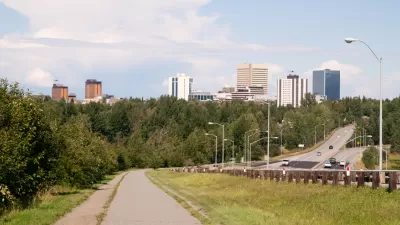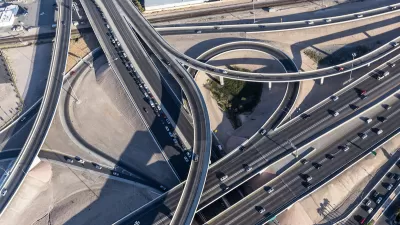The Senate Environment and Public Works Committee voted this week to advance the Surface Transportation Reauthorization Act of 2021, Congress's five-year reauthorization of the federal surface transportation bill.

The Surface Transportation Reauthorization Act of 2021 was introduced on May 22, and on May 26 passed out of the Senate Environment and Public Works Committee.
The transportation reauthorization has traditionally enacted a five-year transportation spending plan for the federal government, though through much of the past decade-plus, shorter, compromise bills have frequently been all Congress could manage to put forward. The previous version of the bill, the Fixing America's Surface Transportation (FAST) Act of 2015, was granted an extension after expiring in 2020, for example.
This time around, the transportation reauthorization bill emerges into a political context made tenuous by the lasting influence of the previous administration as well as the ambitious reforms in infrastructure spending proposed by the current administration in the form of the American Jobs Plan.
Advocates hoping for a new approach to highway spending would curtail the car-centric status quo and aim to reduce car trips instead of inducing them are sorely disappointed. Transportation for America released a statement after the committee's approval of the bill, calling it "another highway bill that cements the broken status quo in place for decades."
"This bill attempts to solve the problems with the transportation system with small, underfunded new programs while spending way more to continue to churn out those same problems." The press release also criticizes the reauthorization for failing to embody the reforms proposed in the American Jobs Plan.
An article by Devon Lovaas, writing for the Natural Resources Defense Council, describes the reauthorization bill as failing to meet the moment. Both Lovaas and another, previous, statement by Transportation for America find good news in the reauthorization, such as, among other features, a mandate to regularly update the Manual on Uniform Traffic Control Devices (MUTCD), a requirement that state spend active transportation dollars on active transportation, and an increase in spending on the Transportation Alternatives Program (TAP).
As for the details of the reauthorization the two resources criticize, the list starts with $220 billion allotted for traditional highway programs, specifically the National Highway Performance Program and the Surface Transportation Block Grant Program (STBG). The bill also fails to tighten safety performance measures, does not commit to a "fix-it-first" approach to capital investment, does not require resilience measures in infrastructure projects, and exempts states from measuring and reducing greenhouse gas emissions.
For details on what the reauthorization would spend on rail projects, an article by Marybeth Luczak for Railway Age has the breakdown for that mode. That article calls attention to the ongoing funding of the Highway-Rail Grade Crossing Program as well as the increased spending for TAP as a component of the STBG.
FULL STORY: “The status quo is sending us backwards.”

Maui's Vacation Rental Debate Turns Ugly
Verbal attacks, misinformation campaigns and fistfights plague a high-stakes debate to convert thousands of vacation rentals into long-term housing.

Planetizen Federal Action Tracker
A weekly monitor of how Trump’s orders and actions are impacting planners and planning in America.

In Urban Planning, AI Prompting Could be the New Design Thinking
Creativity has long been key to great urban design. What if we see AI as our new creative partner?

King County Supportive Housing Program Offers Hope for Unhoused Residents
The county is taking a ‘Housing First’ approach that prioritizes getting people into housing, then offering wraparound supportive services.

Researchers Use AI to Get Clearer Picture of US Housing
Analysts are using artificial intelligence to supercharge their research by allowing them to comb through data faster. Though these AI tools can be error prone, they save time and housing researchers are optimistic about the future.

Making Shared Micromobility More Inclusive
Cities and shared mobility system operators can do more to include people with disabilities in planning and operations, per a new report.
Urban Design for Planners 1: Software Tools
This six-course series explores essential urban design concepts using open source software and equips planners with the tools they need to participate fully in the urban design process.
Planning for Universal Design
Learn the tools for implementing Universal Design in planning regulations.
planning NEXT
Appalachian Highlands Housing Partners
Gallatin County Department of Planning & Community Development
Mpact (founded as Rail~Volution)
City of Camden Redevelopment Agency
City of Astoria
City of Portland
City of Laramie





























